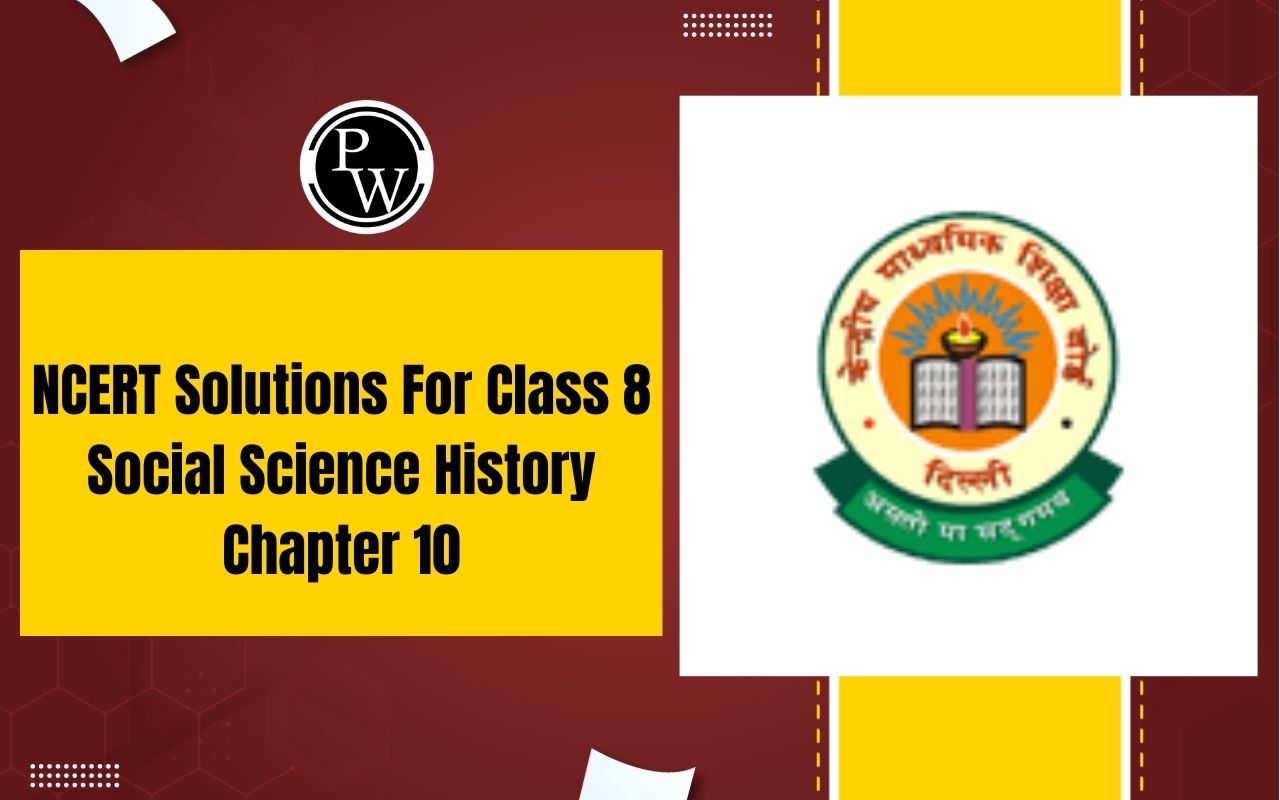
NCERT Solutions For Class 8 Social Science History Chapter 10: NCERT Solutions for Class 8 History Social Science Chapter 10, "India after Independence," explain what happened in India after it became independent in 1947.
This chapter talks about the problems India faced, like the partition that created Pakistan, joining together the many small princely states, and setting up a new democratic government. It also discusses the plans made to improve the economy and bring social changes to reduce poverty, illiteracy, and inequality. These solutions help students understand how India worked to become a united and developing country. They provide clear answers to questions in the textbook, making it easier for students to learn about India's history after independence.NCERT Solutions For Class 8 Social Science History Chapter 10 PDF
Exercises Page No. 140
1. Name three problems that the newly independent nation of India faced.
Answer.
When India became independent in August 1947, it faced three major problems:Refugee Crisis: 8 million refugees came into the country from what was now Pakistan. Homes and jobs had to be found for these people.
Integration of Princely States: There were almost 500 princely states, each ruled by a Maharaja or a Nawab, that had to be persuaded to join the new nation.
Economic and Social Challenges: The country had to address issues of poverty, illiteracy, and inequality, while also establishing a stable and democratic government.
2. What was the role of the Planning Commission?
Answer.
In 1950, the government established a Planning Commission to assist in crafting and implementing appropriate policies for economic development. The commission's task was to outline the roles of both private entities and the government in a system known as a mixed economy.3. Fill in the blanks.
(a) Subjects that were placed on the Union List were _________, _________ and _________.
(b) Subjects on the Concurrent List were _________ and _________.
(c) Economic planning by which both the state and the private sector played a role in development was called a _________ _________ model.
(d) The death of _________ sparked off such violent protests that the government was forced to give in to the demand for the linguistic state of Andhra.
Answer.
(a) Subjects that were placed on the Union List were taxes , defence and foreign affairs . (b) Subjects on the Concurrent List were forest and agriculture. (c) Economic planning by which both the state and the private sector played a role in developing what was called a mixed economy model. (d) The death of Potti Sriramulu sparked off such violent protests that the government was forced to give in to the demand for the linguistic state of Andhra.4. State whether true or false.
(a) At independence, the majority of Indians lived in villages.
(b) The Constituent Assembly was made up of members of the Congress party.
(c) In the first national election, only men were allowed to vote.
(d) The Second Five Year Plan focused on the development of the heavy industry.
Answer.
(a) True (b) False (c) False (d) True5. What did Dr. Ambedkar mean when he said that “In politics, we will have equality, and in social and economic life, we will have inequality”?
Answer.
Dr. B.R. Ambedkar believed that achieving true democracy required not only political democracy but also economic and social democracy. He emphasized the importance of eradicating inequality in both the social and economic aspects of life. He advocated for a society where there would be no discrimination based on wealth or caste, whether one was rich or poor, upper-caste or lower-caste. According to him, true democracy could only be realized when democratic principles extended to all aspects of people's lives, ensuring equality and justice for all.6. After independence, why was there a reluctance to divide the country on linguistic lines?
Answer.
Both Prime Minister Nehru and Deputy Prime Minister Vallabhbhai Patel were opposed to the idea of creating linguistic states. After the Partition, Nehru expressed concern about the emergence of divisive tendencies. He believed that for India to remain strong and united, it was important to prevent further divisions. Nehru noted that India had already been divided on religious lines, despite Mahatma Gandhi's efforts for a united nation. He lamented that instead of achieving freedom as one nation, India had gained independence as two separate nations.7. Give one reason why English continued to be used in India after Independence.
Answer.
Many members of the Congress party felt that English, being associated with British rule, should be replaced by Hindi as the primary language in India. However, those who did not speak Hindi, particularly from the southern regions, had a different perspective. T.T. Krishnamachari, speaking in the Assembly, conveyed a warning on behalf of the people of the South, some of whom threatened to secede from India if Hindi was forced upon them. Eventually, a compromise was reached. Hindi became the "official language" of India, but English would continue to be used in courts, government services, and communications between states.8. How was the economic development of India visualised in the early decades after independence?
Answer.
In India, there exists a free press and an independent judiciary, which are vital components of a democratic society. Despite the diversity of languages and faiths among its people, India has maintained national unity. However, while some parts of the country and certain groups have prospered due to economic development, others continue to face poverty. Wealthy individuals live in luxurious homes, dine in expensive restaurants, send their children to elite private schools, and enjoy lavish vacations abroad. On the other hand, many people still struggle to make ends meet. They live in urban slums or remote villages with limited resources, unable to afford education for their children. This economic disparity highlights the ongoing challenges faced by India in achieving equitable development for all its citizens.